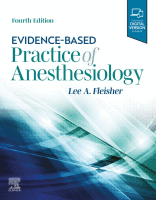Physical Address
304 North Cardinal St.
Dorchester Center, MA 02124

## Intraoperative cardiovascular management of the patient undergoing noncardiac surgery has become an area of widespread interest given the fact that cardiac death is the leading cause of postoperative death within the first 30 postoperative days. Among patients 45 years…

INTRODUCTION A handoff is defined as a transfer of care of a patient between health care providers. This definition includes communication about the condition of the patient and relevant patient history and also may involve the physical transfer of the…

INTRODUCTION The management of postsurgical pain has evolved significantly throughout the years. Since the discovery of morphine in the early 1800s, the field has relied heavily on opioid-based medications. Bayer’s aspirin, which was in widespread use by 1899, provided one…

INTRODUCTION Opioid tolerance, the physiologic process of diminishing effects combined with rising dose requirements over time with long-term opioid usage, has increased in prevalence in the developed world over the past two decades as opioid use has risen in the…

INTRODUCTION A hospital and a freestanding ambulatory surgery center (ASC) were once considered the only locations in which to perform a safe anesthetic and surgical procedure. Since the latter part of the twentieth century, however, this assumption has been challenged.…

INTRODUCTION Anesthesiologists commonly encounter bleeding during and after surgery, which can impact perioperative outcomes, even increasing morbidity and mortality. The most common approach to managing a bleeding patient is by transfusing blood products. Nevertheless, there are instances when there is…

INTRODUCTION The concept of the ambulatory procedure with admission, operation, and discharge on the same day has evolved considerably over the last several decades. Both the types and volume of surgical procedures performed on an outpatient basis have expanded tremendously…

INTRODUCTION Acute respiratory distress syndrome (ARDS) was first recognized in the 1960s, when Ashbaugh et al. described a clinical constellation of hypoxemic respiratory failure accompanied by loss of pulmonary compliance and the histologic hallmark of alveolar hyaline membranes. From the…

INTRODUCTION Outpatient surgery accounts for a significant percentage of anesthetics delivered annually in the United States. Many pediatric procedures, such as hernia repair, circumcision, endoscopy, and heel cord tenotomy, are performed in infants and may occur on an outpatient basis.…

INTRODUCTION The role of regional anesthesia in adult practice is well established. Some of the benefits of regional anesthesia compared with general anesthesia (GA) include improvement in postoperative respiratory mechanics, faster return of bowel function, and a decrease in the…